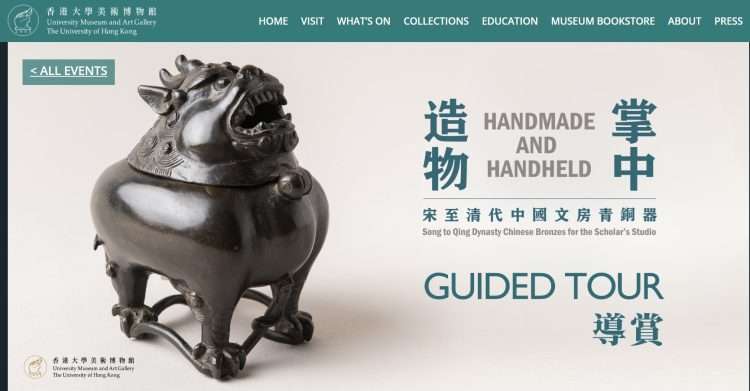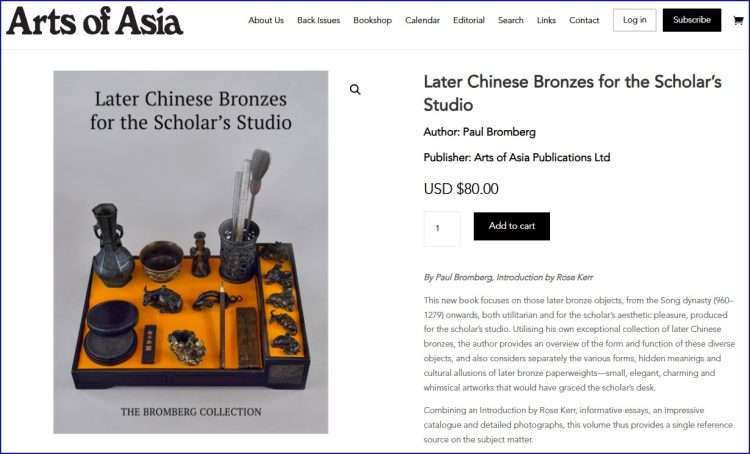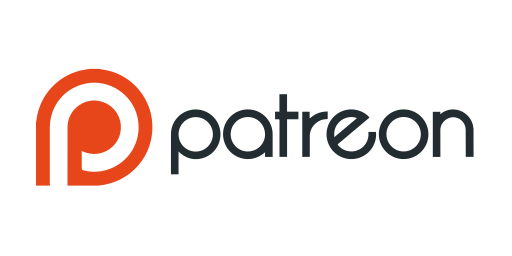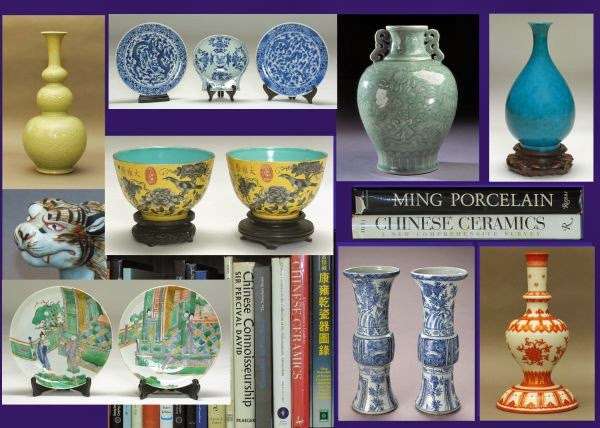Bidamount News December 19, 2025, Vol 613
Later Chinese bronzes from the Song, Yuan, Ming and Qing dynasties
In comparison to other fields in Chinese art, the so-called ‘later’ Chinese bronzes have in the past long been neglected by scholars, collectors, and dealers. Studies on Chinese bronzes almost exclusively focused on early examples. In the early 20th century, the Western art world was captivated by the unexpected discovery of ancient Chinese bronzes through archaeological excavations, which were swiftly acknowledged as some of the most remarkable achievements in human cultural history. In the shadow of these early pieces, later bronzes were largely dismissed, as it was presumed that they were merely inferior imitations of their grand predecessors.
Also, the rise of the pottery industry, with its affordable and easily replaceable high-fired ceramics, led to a decline in the use of metal for religious and secular purposes. As a result, the history of later Chinese bronze craftsmanship is fragmented and less celebrated. The groundbreaking book Later Chinese Bronzes by Rose Kerr, published in 1990, sparked a renewed interest throughout the world of Chinese art. Since then, more scholar’s and dealers have been focusing on these hidden gems, resulting in quite a few good books on the subject (for those interested, I have made a list of publications below).


TOP: A bronze archaistic flower vase, 12th – 14th century, Song/Yuan dynasty. Previously in the Menken Works of Art collection.
Bottom: A Chinese bronze archaistic vase, Hu, 12th – 14th century, Song/Yuan dynasty. Previously in the Menken Works of Art collection.
More than eight centuries ago, Chinese artisans sparked a revival of bronze casting that persisted until the 20th century. Turning away from the Buddhism of the preceding Tang dynasty, the government and intellectuals of the Song dynasty championed a revitalized Confucianism, sparking a cultural renaissance in China. This movement, which encompassed philosophy, music, and the arts, found its inspiration in the culture of the Bronze Age. The appreciation and scholarly study of ancient bronzes became a fundamental aspect of the broader effort to restore Confucian social and political order during the Song dynasty, reflecting the era’s emphasis on cultural heritage as a means of reinforcing traditional values and legitimizing governance.
The literati class collected ancient bronzes and also utilized them as incense burners and flower vases during special occasions. Aware that frequent use of these precious antiques could damage them, they sought newly crafted vessels with similar shapes and designs, made from both bronze and ceramics. This practice fostered a revival of bronze craftsmanship and cultivated a taste for archaism, a defining feature of later Chinese culture.

Appreciating Antiquities in the Bamboo Garden (竹院品古), Qiu Ying (仇英, ca. 1494-1552), Ming Dynasty (1368-1644) Album leaf, ink and color on silk, 33.8 x 41.4 cm, Palace Museum, Beijing.
Drawing inspiration from the masterfully cast ritual vessels of the Bronze Age, the artisans produced remarkable works. They maintained the shapes and motifs of antiquity while introducing new patterns, functions, and meanings, blending tradition with innovation. The Hu vessel for instance, functioning as a ritual wine container originating from the Shang period. These bronze wine containers were placed in the grave of an ancestor as part of ritual in order to ensure a good relationship with the ancestor’s spirit. The same shape was used in later Chinese bronzes, functioning as a flower vessel:
 .
. 
Left: A bronze ritual wine container, hu, ca. 1200 BCE, Smithsonian collection, Accession Number F1948.1
Right: A bronze archaistic flower vase, hu, Ming dynasty. Menken Works of Art collection, inv. no. MW142.
Wen Zhenheng (1585–1645), a Ming dynasty scholar, painter, and landscape garden designer, was the great-grandson of Wen Zhengming (1470–1559), the renowned Ming painter. Between 1620 and 1627, he authored Treatise on Superfluous Things, a comprehensive guide on the ideal lifestyle for a gentleman. The work detailed the material culture a refined scholar should embrace and the elements he should avoid. This compilation of “Do’s and Don’ts” positioned itself as the ultimate authority on taste and decorum for the gentlemanly elite of the era. On the topic of flower vases he writes:
“When bronze flower vases have been buried for a number of years and are then used for flowers, the flowers themselves become fresh and bright; it is not just the antiquity of the bronze that is so appealing. Bronze vessels in which flowers may be placed consist of: zun (wine vessels), lei (wine jars), gu (goblets), and hu (pots or jugs), which may be selected on the basis of the size of the bunch of flowers.”
Bronze artisans did not limit themselves to creating flower vases in archaistic styles however; they also crafted a wide range of other items, including Buddhist and Daoist figures, censers, scholar’s objects, hand warmers, and various other decorative and functional pieces. As a scholar’s object, paperweights or bronze weights hold a special place within the refined world of arts for the scholar’s studio, serving not only a practical purpose but also embodying artistic and cultural significance.

A Chinese bronze paperweight or scroll weight in the form of a recumbent dog with puppy, Ming dynasty (1368-1644). Menken Works of Art collection, inv. no. A00526.
As these weights in earlier times served another purpose, they exemplify the repurposing of items with a rich cultural history and background, while maintaining the form and medium in which they were originally made.
“As early as the Warring States Period (475-221 BC) and certainly during the subsequent Han dynasty (206 BC – 202 AD), bronze weights were used as weights to secure the four corners of woven bamboo floor mats on which a board game called liubo was played. This tradition of sculptural weights continued long after the game of liubo disappeared. As paper became the popular medium of choice for scholars and artists, weights became a necessity to hold down a scroll or paper to ensure a flat surface for painting or calligraphy.”
Paul Bromberg, Later Chinese Bronze Paperweights, article in Arts of Asia, autumn 2021.
The ‘dog’ weight pictured above was made in the form of a recumbent dog with puppy. A joss stick can be sticked into the swirling tail which makes this weight multifunctional and emphasizes its function as a scholar’s object. This brings us to another important part in Chinese culture; incense and the utensils that were used to burn them.

Resin-based fragrant incense found in the tomb of the King of Nanyue. Photo credit: Museum of the Western Han Dynasty Mausoleum of the Nanyue King.
Incense burners were a very important part of the scholastic and religious cultures within China. Some of the earliest examples of incense discovered in China include a resin-based aromatic substance (see photo above) stored in a red-lacquer box, unearthed from the tomb of the King of Nanyue (circa 130 BCE). During the Han dynasty, the creation of art pieces related to fragrance also began to flourish. Small yet exquisite lacquer, bronze, or jade boxes were likely crafted to hold these precious perfumes. However, the most notable advancement from this period in the history of incense was the emergence of the incense burner.




Left: A Boshanlu ‘mountain’ incense burner from the Han dynasty.
Second to left: Women burning incense outside Bai Yun Guan (White Cloud Temple) at New Year’s, Beijing, ca. 1933-1946, © President and Fellows of Harvard College.
Second to right: An ancestor veneration ritual, Shanghai, ca. 1900, © President and Fellows of Harvard College.
Right: Temple interior at Xi Yu Si showing an altar with ritual objects, including bronze censers and candlesticks, ca. 1933-1946, © President and Fellows of Harvard College.
The legendary bronze vessels from the imperial workshop of the Xuande period (1426-1435), especially incense burners, are traditionally believed to represent the highest achievement of Ming dynasty bronze production. There are only few surviving examples and there is much scholarly debate on the authenticity of these pieces. In later periods, numerous high-quality reproductions bearing Xuande marks emerged, reflecting the Chinese tradition of honoring past emperors and their material culture. The censer from our collection shown below, exemplifies this enduring practice. This gilt bronze censer of typical bombé form with loop handles is raised on a circular footrim, with a well-defined carved six-character Xuande mark to base. An identical censer can be found in the British Museum collection, Museum number 1988,0520.2.


A Chinese gilt bronze incense burner, Da Ming Xuande Nianzhi six-character mark, Qing dynasty, 18th / 19th century, Menken Works of Art collection, inv. no. MW55.
Not only incense burners, but a variety of other utensils were also designed to store, hold or handle incense, such as tool vases, incense tools, covered boxes, and incense stick holders. The latter, also known as ‘xiangtong’, would have been used with a censer, to hold a supply of incense sticks. The Chinese literati would have had these parfumiers for daily use in scenting the home or in offering to household deities. See an incense stick holder from our collection below:

A reticulated bronze incense-stick holder, ‘xiangtong’ (literally, ‘incense cylinder’), China, Ming dynasty. Menken Works of Art collection, Inv. No. A00186
Another noteworthy piece from our collection is a small ‘Boy’ figure holding a Ding tripod censer in front of him. An incense stick can be stuck into the Ding vessel, a smart and humorous implementation of incense-culture. As such, this playful figure embodies the intermingling of functionality and artistry characteristic of later Chinese bronzes.


A Chinese bronze incense stick holder figure, Ming dynasty, Menken Works of Art collection, inv. no. MW128.
From archaistic vases to incense tools, the evolution of later Chinese bronzes demonstrates how artisans continuously reimagined their craft while remaining rooted in historical traditions. Inspired by the grandeur of their Bronze Age predecessors, these craftsmen created objects that were not merely utilitarian but also deeply embedded with cultural, spiritual, and aesthetic values.
The hallmark of later Chinese bronzes lies in their versatility and adaptability. Whether used in the scholar’s studio, at a Confucian altar, or during household rituals, these objects became essential markers of refinement and devotion. The literati’s penchant for archaism further fueled the demand for bronzes that harmonized ancient forms with contemporary functions, ensuring the longevity of this venerable art form well into the modern era.
Today, the long-neglected world of later Chinese bronzes is receiving the scholarly attention it richly deserves. Through exhibitions, publications, and collections, these intricate and historically significant works are finally being celebrated on a global stage.
The renewed appreciation for these bronzes underscores their role as cultural bridges. They connect past and present, embodying the resilience and creativity of Chinese artisans across centuries. Whether as scholarly treasures, ritual implements, or aesthetic marvels, these later bronzes invite us to delve deeper into the legacy of Chinese material culture, offering a glimpse into a world where art, tradition, and functionality coalesce in perfect harmony.

A group shot of four later Chinese bronzes flower vases from the collection of Menken Works of Art.
We haven’t even slightly touched on all topics within this subject, Chinese Buddhist and Taoist sculptures for instance, which is worth a whole book in itself. Therefore we have added some recommended readings on later Chinese bronzes that provide valuable insights into this fascinating subject:
Later Chinese Bronzes (Rose Kerr, 1990)
China’s Renaissance in Bronze – The Robert H. Clague Collection of Later Chinese Bronzes 1100-1900 (Robert D. Mowry, 1993)
The Second Bronze Age – Later Chinese Metalwork (Sydney L. Moss Ltd, 1991)
Chinese and Japanese Bronzes A.D. 1100 – 1900 (Michael Goedhuis)
Chinese Buddhist Bronzes (Hugo Munsterberg, 1967)
Asian Bronze (Rijksmuseum, 2024)
Later Chinese Bronzes for the Scholar’s Studio (Paul Bromberg, 2024)
Recasting the Past: The Art of Chinese Bronzes, 1100-1900 (Pengliang Lu, 2025)
Hand Made and Handheld..Exhibit and Catalog


The catalog of the pieces for the above exhibit can be seen in this catalog. Made available through Arts Of Asia magazine. CLICK HERE TO ORDER
Note: I have already bought this catalog, it is a very good reference on the topic, an essential I think if you are a collector. Best Peter
If You'd Like What We Do
Please consider joining the BIDAMOUNT Community by becoming a PATREON or Global Member Subscriber and help support this site and our YouTube Channel.
Thank you very much. Peter
$5 Per Month
$ 4 Per Month

&
Extra Video's.
Weekly YouTube Video's "AD FREE"
Auction House Report Card
FREE Weekly Copies Of The Antiques Gazette down loadable to your device.
Posts of Interest: News, Events etc.
Downloadable Books and Catalogs. All for $5 a month.
For the extra dollar a Month I think the Patreon Membership gives more bang for the buck.. Both support the YouTube Channel and maintain this site. ..
This Week's Videos
A few items we think are nice.
Live Auctioneers....A few things you might like!
A small sample of things from the Global Member Pages and through PATREON, Join Today on the HOME PAGE
Build YOUR Library: Reference Book Suggestions
For More Reference Books, Visit Our Bookshop. CLICK HERE










